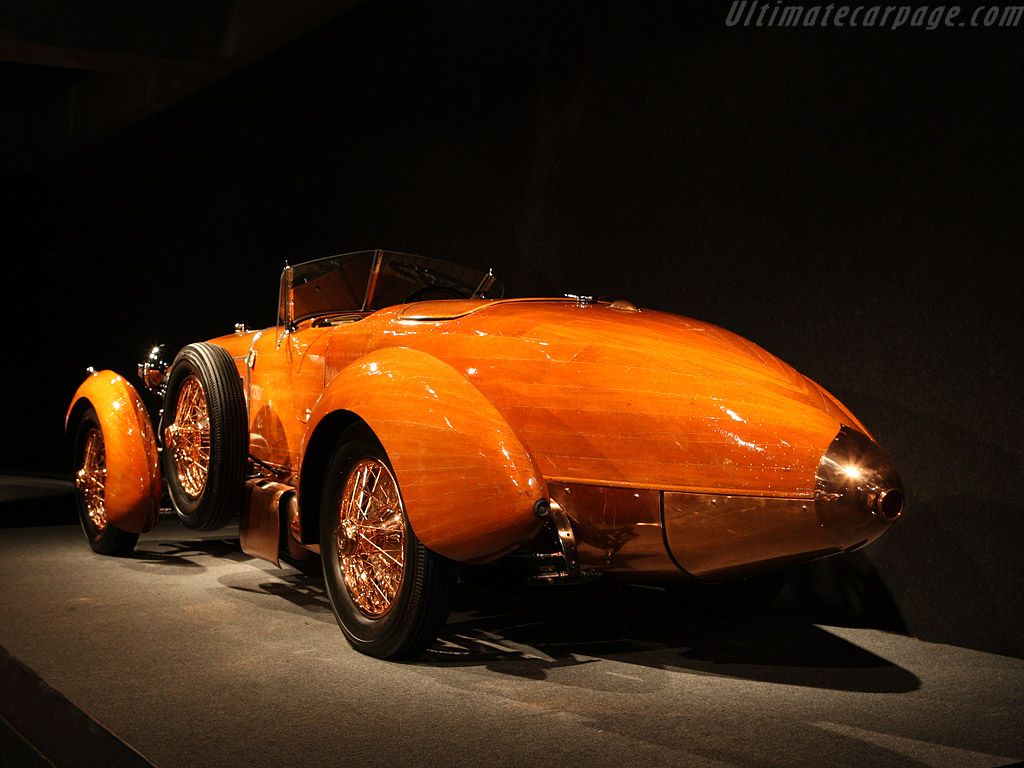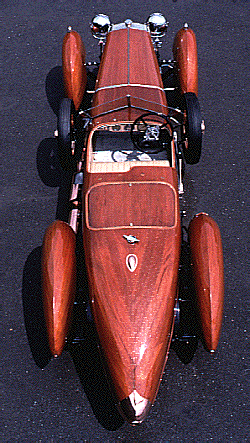 09-18-2010, 08:48 AM
09-18-2010, 08:48 AM
|
#18 (permalink)
|
|
Riding the Ocean Spray
Location: S.E. PA in U Sofa
|
Ever since I first saw this one when I was a little kid I get a woody from it:
1924 Hispano Suiza H6C Tulip Wood Torpedo
At the first motor show after the end of the First World War, the 1919 Paris Auto Salon, Marc Birkigt launched a new luxury model, the H6. For many years the six cylinder Hispano Suiza's refinement and built quality remained unmatched.
In the War, Hispano Suiza had supplied over 50,000 V12 fighter plane engines. For his new top of the line model, Birkigt first intended to use a version of the well proven V12. After some tests he concluded that one bank of a V12 would be more than sufficient to propel the new car. The 'six' displaced just over 6.5 litres and featured a single overhead camshaft. Each 35 lb crankshaft was machined from a 600 lb billet, resulting in a very rigid crankshaft. This was typical for Birkigt's 'no cost spared' perfectionism.
For the block and head aluminium was used, to keep the weight of the engine down. In the block a six separate steel sleeves formed the cylinders. Ignition was through two coils, with two plugs per cylinder, one on each side of the engine. The overhead camshaft was shaft driven and operated the valves, which were set vertical in the block. This was unconventional setup, which could result in tremendous damage, if a valve dropped in the cylinder. Birkigt was confident in using it, as the valves had never failed on the V12 airplane engines.
Finished in black enamel and polished aluminium, the engine was mounted in a conventional ladder frame. It was suspended by a live axle and semi-elliptic leaf springs all-round. The four drum brakes were power assisted by a patented 'servobrake' system. The ingenious system used the car's momentum to slow it down. The brake assistance system took the power from the gearbox, which drove a shaft at 1/64 the speed of the engine. If all else failed, the rear brakes could be activated using a hand lever.
Built in Paris and later in the Czech Republic as well, the H6 offered luxury, speed and refinement. Many of Hispano Suiza's European competitors like Rolls Royce, Bentley and Isotta Fraschini offered one or two of these ingredients, but not until the late 1920s did another manufacturer come up to par with the H6. This complete package did not come cheaply and for a while the H6 was the most expensive European car available. In 1922 the slightly more powerful H6B replaced the H6 and in 1924 the 8-litre H6C was added to the line-up.
Hispano Suiza delivered the H6 as a rolling chassis for coach builders to body. To match the car's remarkable abilities, only the finest coach builders were commissioned to design and fit bodies on the H6 chassis. A vast majority of the chassis were fitted luxurious coachwork. The featured example is one of the most famous exceptions. Built to the order of one of of Hispano Suiza's biggest clients, Andre Dubonnet, the unique coachwork was built by Nieuport, a French aviation company.
Dubonnet, the heir to an aperitif and cognac fortune, was an accomplished pilot and racing driver and needed a new car for the 1924 edition of the Targa Florio. He understood that weight and wind resistance were his biggest advisaries, which is why he turned to Nieuport. They crafted and exceptionally light tulip wood body, which was riveted together by thousands of brass rivets. Despite its huge size, the body weighed a mere 160 pounds. It was fitted on a special H6C chassis, which used a lower than standard radiator and sported a 46 gallon gas tank. There were only two examples fitted with this 'competition' radiator.
The exceptional machine was driven to a sixth at the Targa Florio by Dubonnet. He also competed in the Coppa Florio where he finished fifth overall and first in class. Upon completion of these events, the car was retired from racing and modified for regular road use. Initially the car was equipped with very elegant 'flowing blade' fenders. These were later replaced with more substantial wings, similar in shape to the torpedo body. All of the copper trim is a later addition as well. It is in this condition that the car has survived and can be admired at the Blackhawk Museum in Danville, California.
Article by Wouter Melissen, last updated on September 29, 2008


  |

|
|